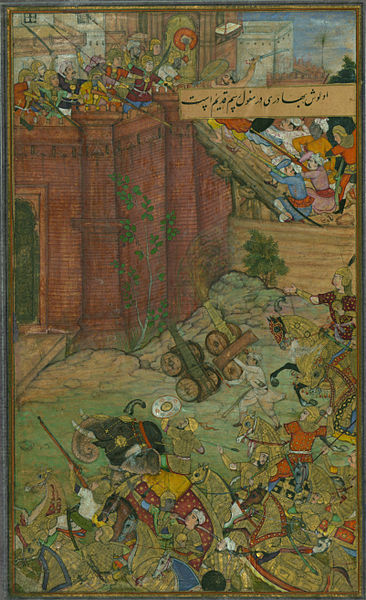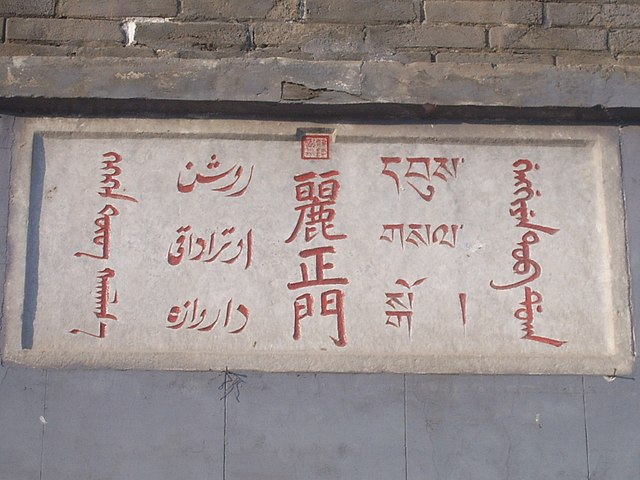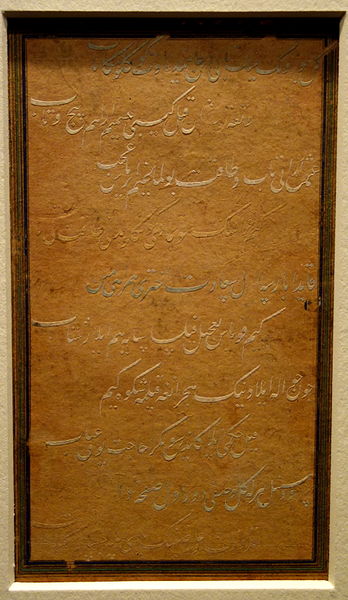The Bāburnāma is the memoirs of Ẓahīr-ud-Dīn Muhammad Bābur (1483–1530), founder of the Mughal Empire and a great-great-great-grandson of Timur. It is written in the Chagatai language, known to Babur as Türki "Turkic", the spoken language of the Timurids.
An awards ceremony in Sultan Ibrahim's court before being sent on an expedition to Sambhal
Victoria and Albert Museum: Babur and a group of men including his son, Humayun, the next emperor were encamped near Bagram and were told that a rhinoceros had been seen nearby. As Humayun had never seen one before, they rushed to find it.
Babur and his army emerge from the Khwaja Didar Fort, British Museum
The siege of Isfarah, Baltimore
Chagatai, also known as Turki, Eastern Turkic, or Chagatai Turkic, is an extinct Turkic language that was once widely spoken across Central Asia. It remained the shared literary language in the region until the early 20th century. It was used across a wide geographic area including western or Russian Turkestan, eastern or Chinese Turkestan, the Crimea, the Volga region, etc. Literary Chagatai is the predecessor of the modern Karluk branch of Turkic languages, which includes Uzbek and Uyghur. Turkmen, which is not within the Karluk branch but in the Oghuz branch of Turkic languages, was nonetheless heavily influenced by Chagatai for centuries.
Lizheng Gate at the Chengde Mountain Resort. The second column from the left is the Chagatai language written in Perso-Arabic Nastaʿlīq script which reads Rawshan Otturādiqi Darwāza.
Late 15th century Chagatai Turkic text in Nastaliq script.






